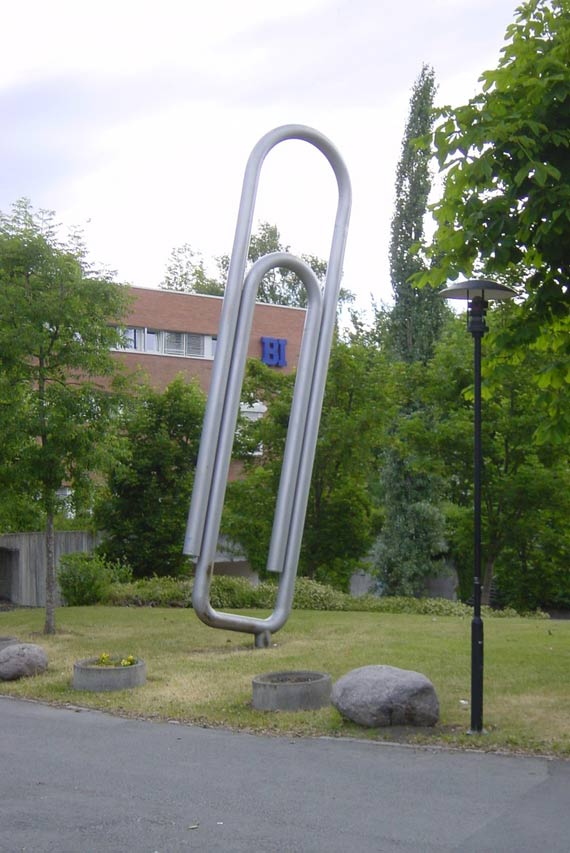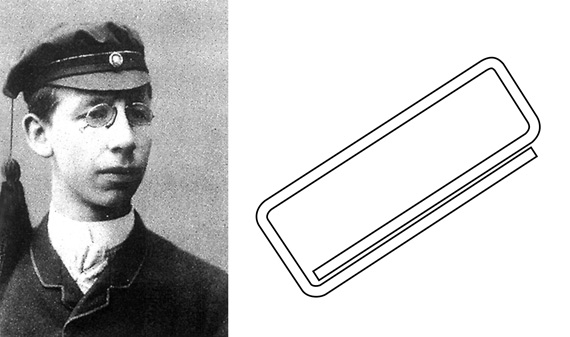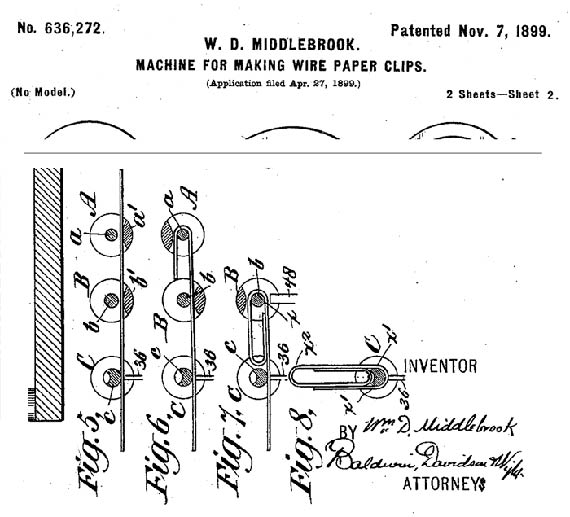During World War II, the Nazi occupation regime in Norway banned insignias with the national flag or with the emblem “H7” of King Haakon VII, the elected monarch in exile. In response, the Norwegian resistance adopted another symbol on their lapels: an innocent metal clip used to hold together sheets of paper. This humblest of objects then took on the rebellious meaning of strength and unity against the invaders, adding to the patriotic pride that already existed in the paper clip for being a Norwegian invention. Today, in the town of Sandvika, a giant seven-meter high paper clip commemorates this national symbol and its inventor, Johan Vaaler.

This might have been the story, and in fact it has been popularized in this way, but this is not exactly how it happened. While it is true that the Norwegians displayed paper clips in protest against the Nazi occupation, the symbol had already been used by the French resistance. And the Sandvika sculpture reflects the object that is found nowadays in offices and homes around the world, but it’s a different model from the design patented by Vaaler. He invented other paper clip, not THE paper clip.

Few people may know that the type of paper clip in most widespread use today has its own name: it’s called the ‘Gem’ and it’s the elongated model with parallel sides and two incomplete loops of wire. Curiously enough, it is not known who invented it. “It’s still unclear,” says engineer and historian Henry Petroski to OpenMind. Petroski, a professor of civil engineering at Duke University (USA), has explored the reasons for and the origins of the designs of many everyday items, sharing his findings in books such as Invention by Design (Harvard University Press, 1996) and The Evolution of Useful Things (Knopf Doubleday Publishing Group, 2010).
“The patent granted to Samuel B. Fay in 1867 is often cited as the first patent of the paper clip, but its design was not intended primarily for papers,” Petroski points out. Fay’s invention was intended to replace the pins used to attach pieces of paper to clothing, especially the most delicate fabrics such as “silk, lace and all the finer class of goods, without injury or leaving the slightest trace upon the goods when removed,” detailed the American in his patent. Fay’s clip was similar to those that today we can find on shirts that are sold folded.
In the case of the ‘Gem’ paper clip, its inventor remains anonymous, perhaps forever. “The oldest clues are in advertisements from the late nineteenth century,” says Petroski. The first confirmed visual representation appears in an ad published by the American office supply company Cushman & Denison of New York in the September 1893 issue of The American Lawyer magazine, according to what the website Early Office Museum was able to discover. “Don’t mutilate your papers with pins or fasteners,” announced Cushman & Denison in their advertising. The company, which sold its clips for 25 cents a box, registered the Gem trademark in 1904, but the proof that even then it was already a popular object is provided by the patent granted in 1899 to the American William Middlebrook for a “machine for making wire paper clips.” According to the illustrations of the patent, these paper clips are clearly the Gem type.

With the end of the nineteenth century came a flood of patents for different paper clip designs, only a few of which have survived, but all of which are in the minority nowadays compared to the Gem. “There are patents for Gem variations, but the Gem itself remains unpatented,” clarifies Petroski. Among these multiple variations are those of Johan Vaaler (1866-1910). The Norwegian inventor, who ran a patent office in Oslo (then Christiania), didn’t intend to introduce improvements; he was simply unaware that his invention already existed. His paper clip was missing his last turn of the Gem, which made it less practical and less functional. Vaaler patented his design in June 1901 in Germany and the USA. Vaaler probably learned about the Gem later, and his patents expired without being exploited.
Vaaler’s invention led to the myth of the paper clip being a Norwegian invention thanks to Halvard Foss, an engineer at Norway’s Industrial Property Office who, in the 1920s, found the forgotten patent of his compatriot in the German registry, perhaps without realizing that the design differed from the Gem paper clip. Foss brought the fact to light in his country and, after the Second World War, Vaaler’s paper clip was linked to the memory of the symbol of the resistance against the Nazis.
And thus was born a patriotic emblem that is also one of the great little inventions of mankind, one that, according to Petroski, “comes fully assembled and doesn’t require batteries to operate. Nobody expects a box of paper clips to come with instructions, and they don’t tend to think too much about how they are manufactured and used.”
Comments on this publication